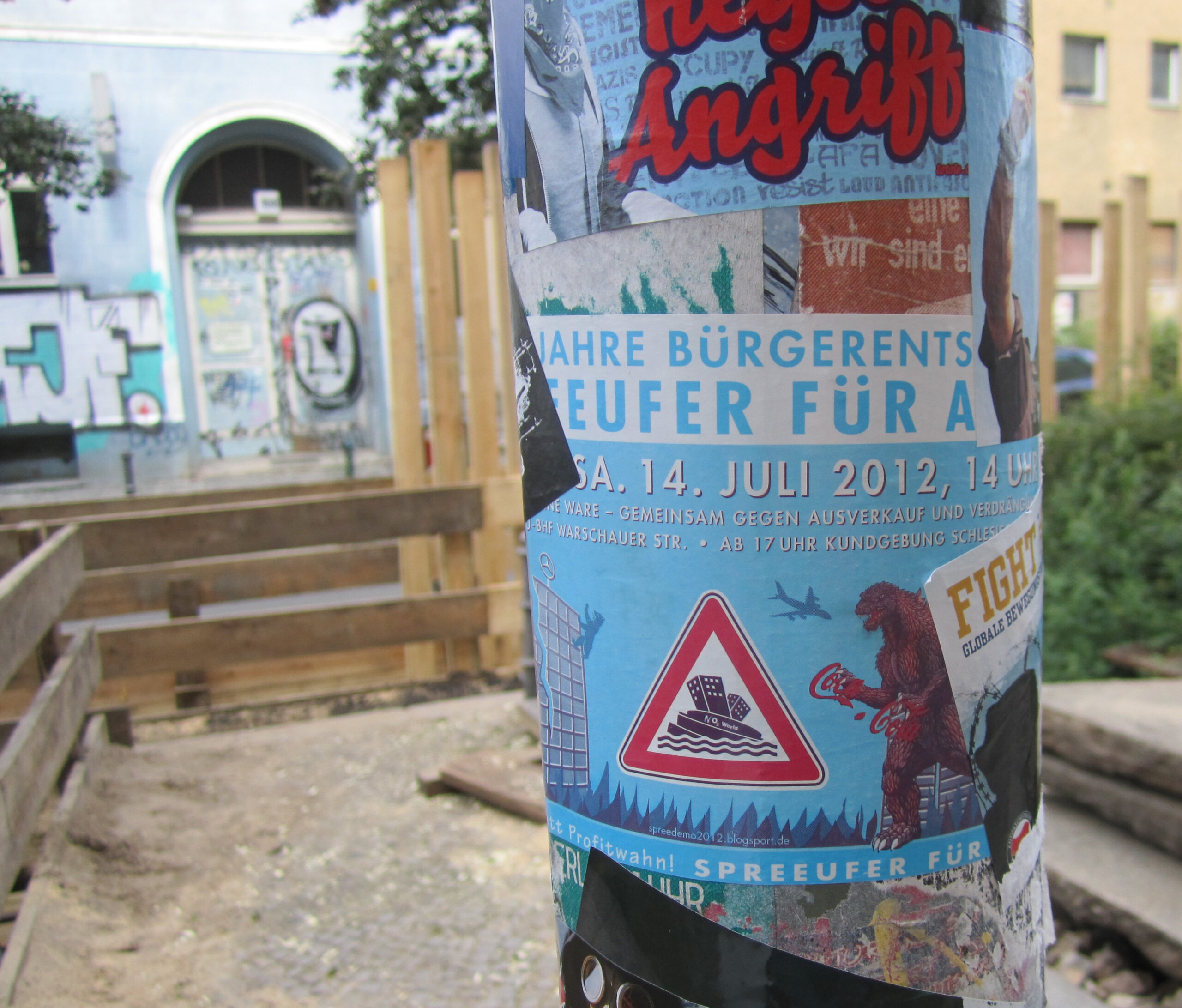German stickers and “Street Art Graphics” digital archive update
- Published
- in "The Process is the Product", all, Antifa, Berlin, Visual literacy
I spent a few months last winter and spring organizing hundreds (thousands?) of original, unused German political stickers that I’ve gathered since 2013, though some date back 10 or 20 years. Oliver Baudach at Hatch Kingdom, Berlin, who has been my most generous supporter, has given me well over 1,000 German stickers, and seeing his sticker museum convinced me to focus on collecting original, unused stickers whenever possible. I’ve also picked up stickers in Berlin at alternative bookstores, political rallies, May Day gatherings, infoshops, zine fests, and occasionally ebay.de.

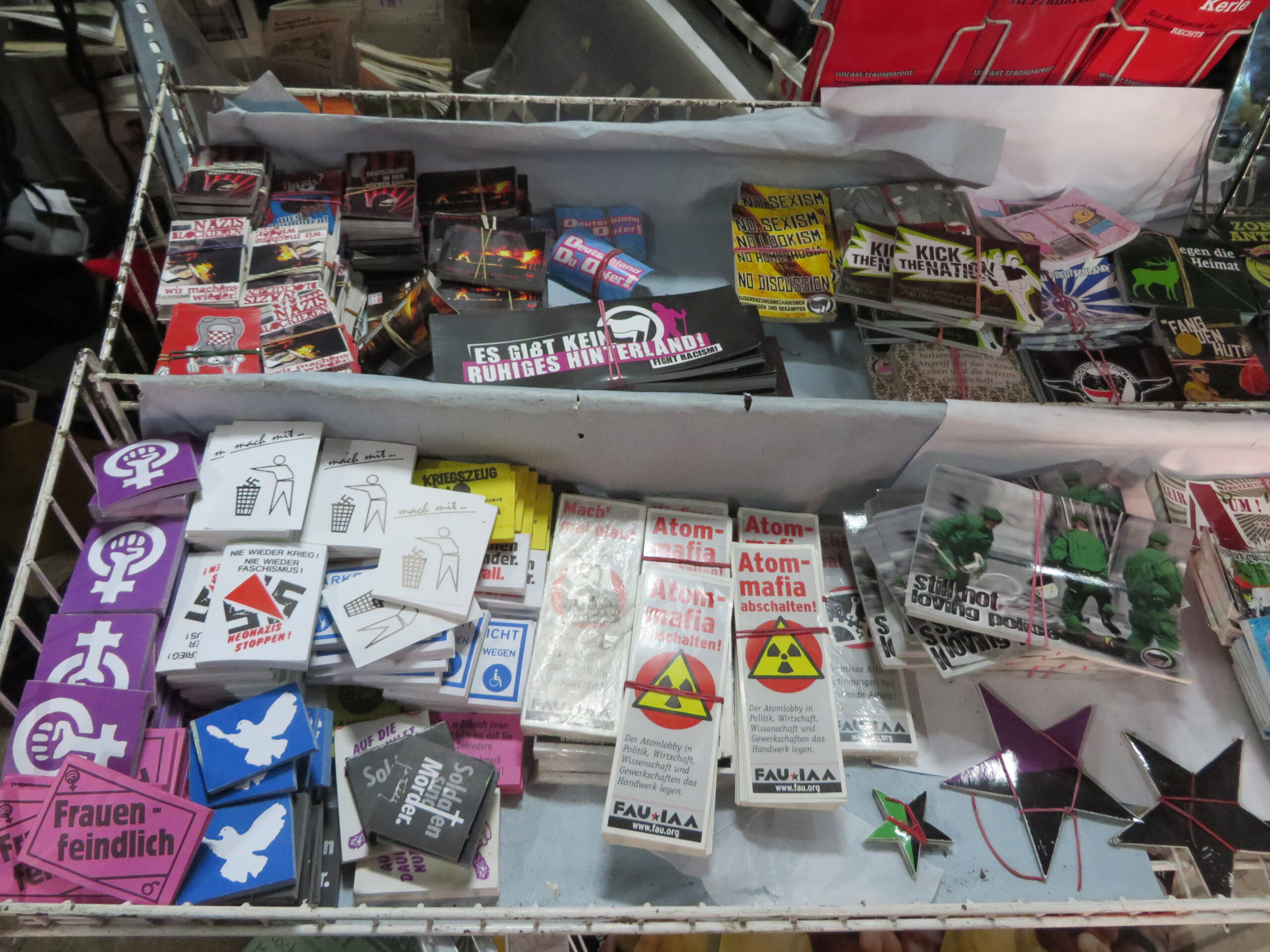
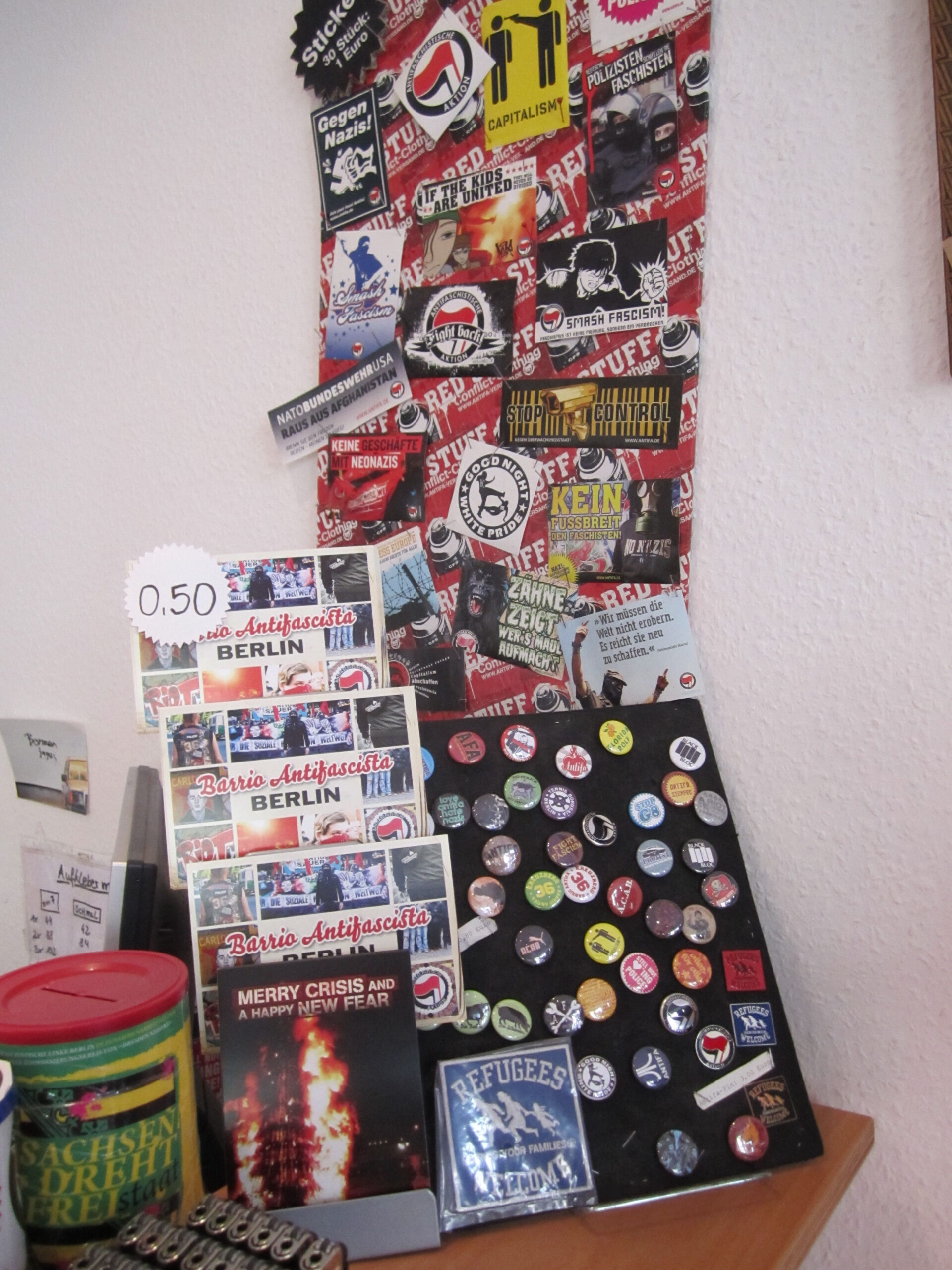
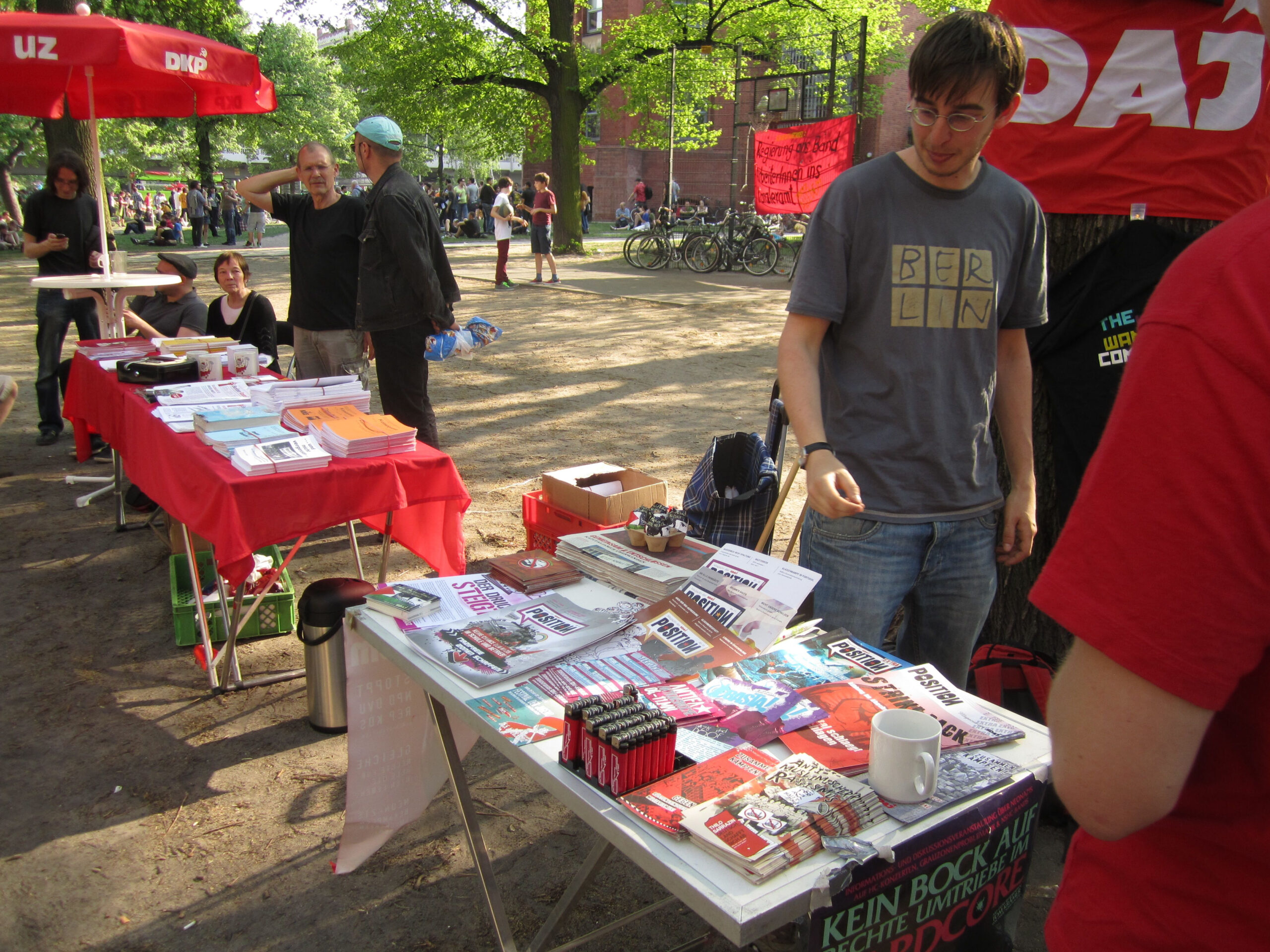
Several hundred German stickers also came in recently as gifts, with one donation from an anonymous street artist who visited the Paper Bullets exhibition at Hatch in 2014, and another from a contact at a Berlin squat/infoshop in 2015. One day last April, I laid everything out on one of the gallery floors where I work (1,000 square feet) to check for dupes. The German stickers are now almost fully sorted and archived in notebooks; I plan to scan as many of them as possible in the weeks and months ahead.
I also made a concerted effort this past summer to catalogue German stickers that Oli has given me for the Street Art Graphics digital archive in Shared Shelf Commons. Oli and his frau, Nada Carls, came to St. Lawrence University in June, and in one week we catalogued over 400 stickers. Oli and Nada created metadata for Title, Title-Translation, and Description fields, and I focused on the more straightforward Date, Geographic Location, Source, Language, Filename, and Credit Line fields. In some cases, Oli knew the artists who made the stickers, and Oli and Nada both brought a wealth of expertise to contextualizing the stickers. Their native understanding of German language, artists, culture, and socio-political events and activities added a rich dimension to the cataloguing I am able to do with staff and students at St. Lawrence. Perhaps everyone’s favorite stickers were from Hamburg’s Football Club St. Pauli (FCSP), a very creative, outspoken team. Oli, Nada, and I catalogued 137 FCSP stickers from 2013 that promoted the team and its players, made fun of rival teams, and also commented upon sociopolitical issues, such as racism, sexism, fascism, immigration, German nationalism, and police brutality.
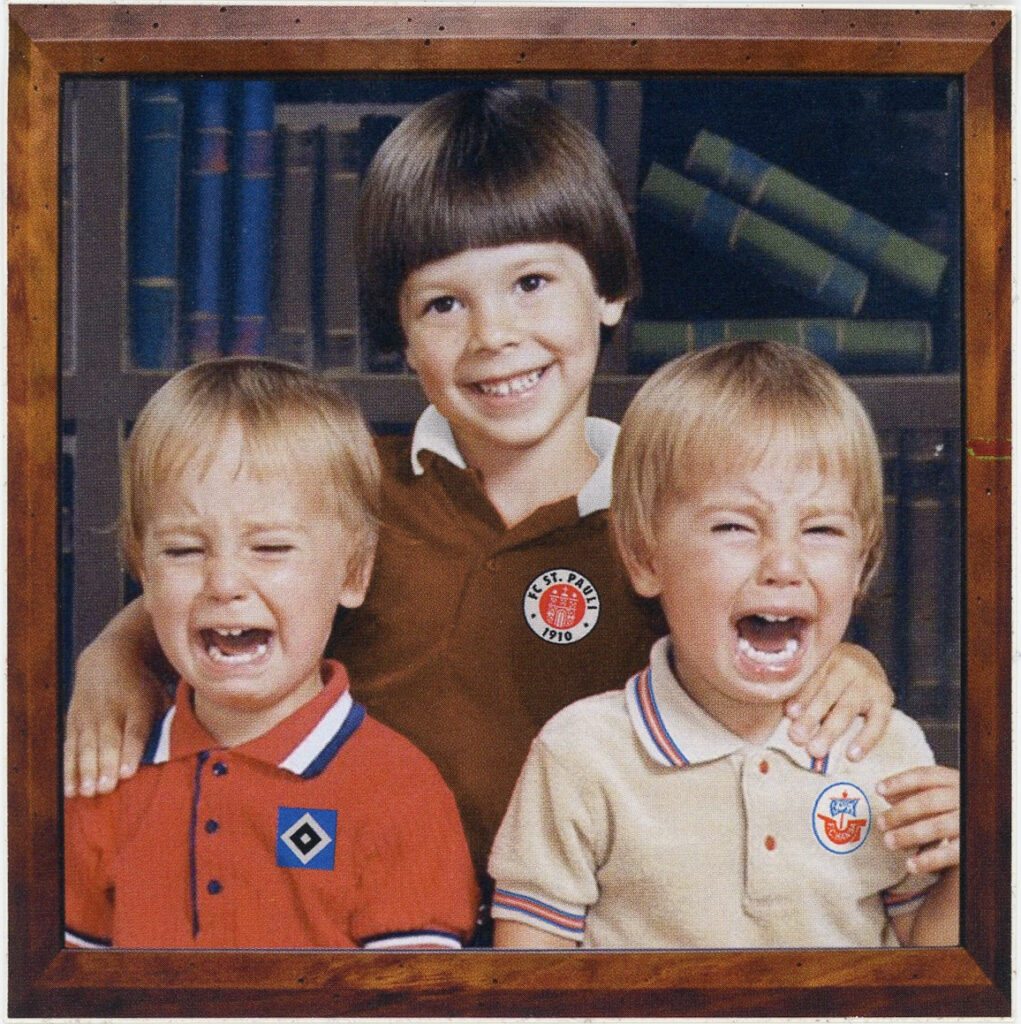
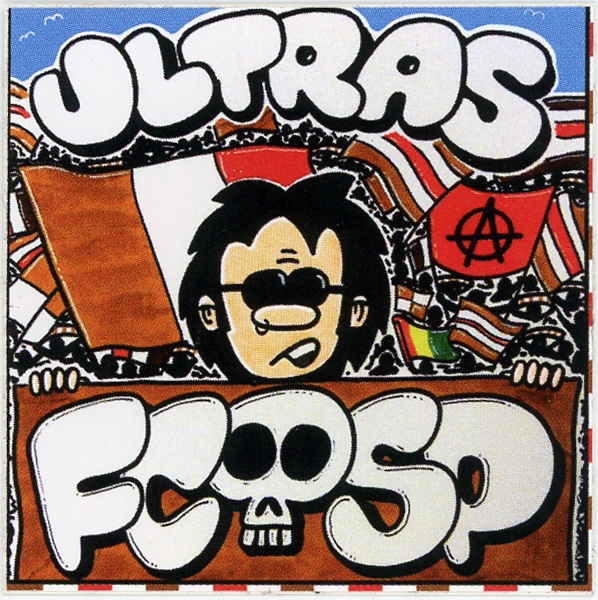
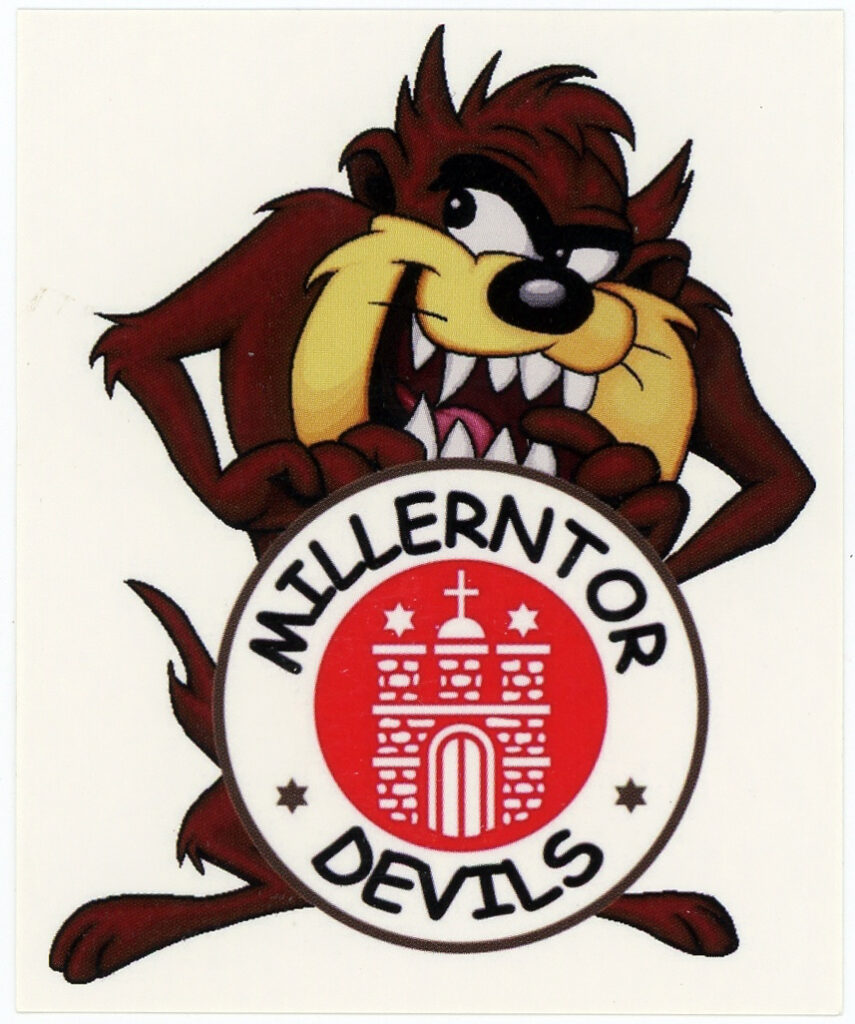
After hearing about Oli and Nada’s visit, Nadine Emmerich, an independent German journalist, wrote a story about the cataloguing project for the second largest German news website called ZDF Heute in an article called Stickers als “demokratischste Kunstform.”
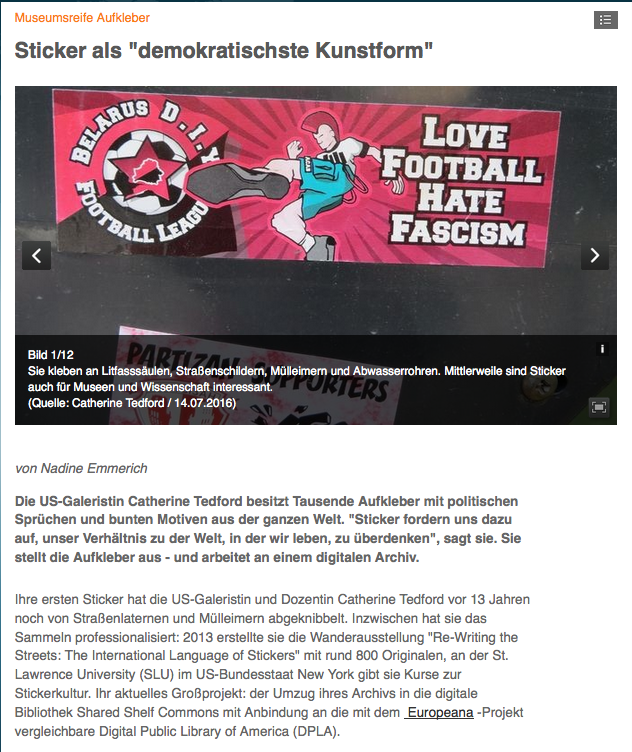
Before Oli and Nada visited, I had started a “metadata cheat sheet” in Word with text that could be cut and pasted into Description fields and Curator’s Notes that share similar information (subjects, political parties, concepts, etc.). Nada suggested we use Google Docs and store it in Drive, and it’s turned out to be quite useful in collaborative projects like this. Here is what we came up with for “Antifaschistische Aktion.” We kept the description relatively short but then elaborated in Curator’s Notes.
Antifaschistische Aktion (Description)
Antifascist message from Antifaschistische Aktion (antifa in Germany), a non-hierarchical, autonomous network of political groups whose goal is to “smash fascism” and other forms of oppression. Image of [fill in blank].
Antifaschistische Aktion (Curator’s Notes)
Antifa members create propaganda (fliers, brochures, stickers) and organize rallies and demonstrations against far right, nationalist, and anti-Semitic activities and events. The original antifa logo of two waving red flags surrounded by a red circle was designed in 1932 by two German graphic artists, Max Kelison and Max Gebhart. At the time, the red flags represented the unity of the Social Democratic Party (SPD) and the Communist Party of Germany (KPD). Since the 1980s, the antifa logo depicts two waving red and black flags surrounded by a red or black circle. The red flag represents socialism and communism, while the black flag represents anarchy, groups joined together against fascism. The flag logo has been modified by various groups to comment upon such issues as sexism, homophobia, racism, environmental degradation, capitalism, etc.
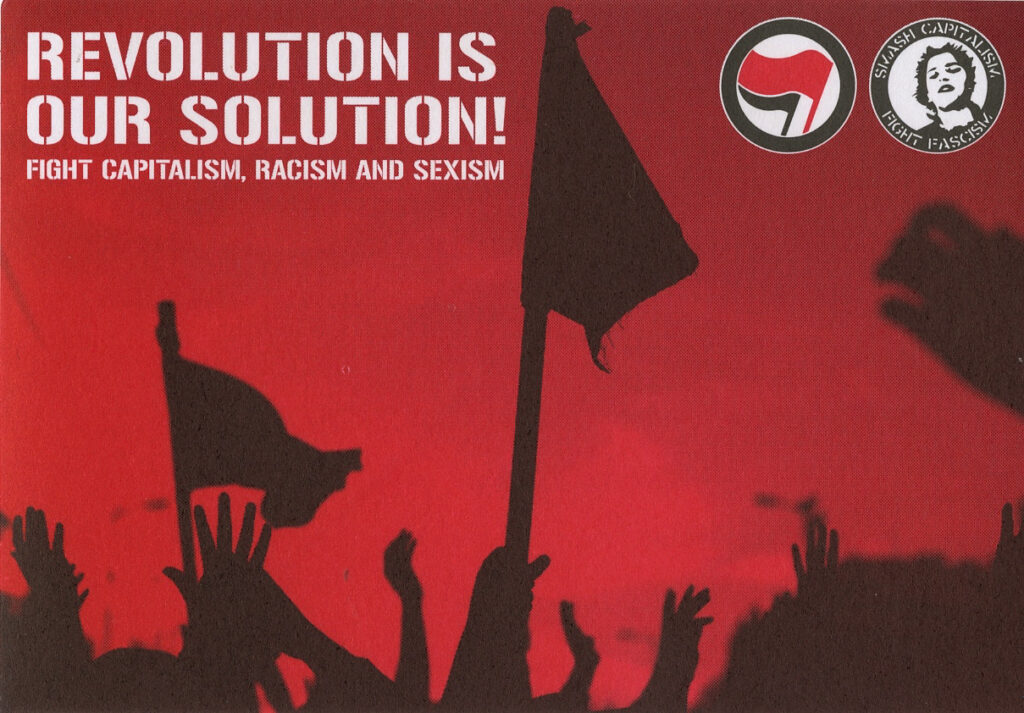
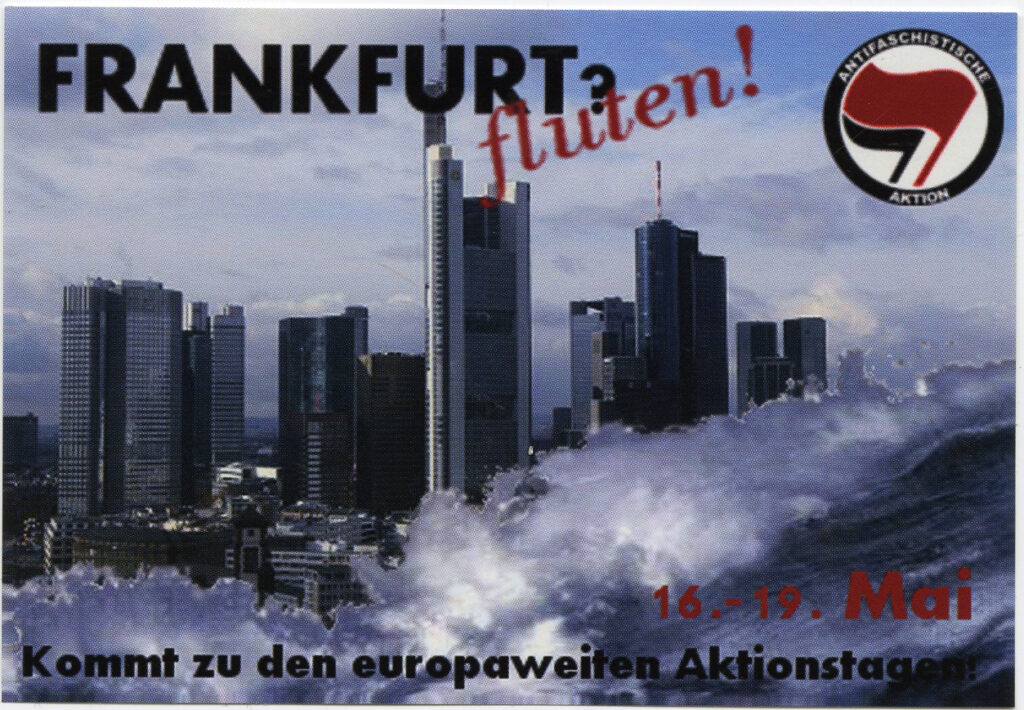
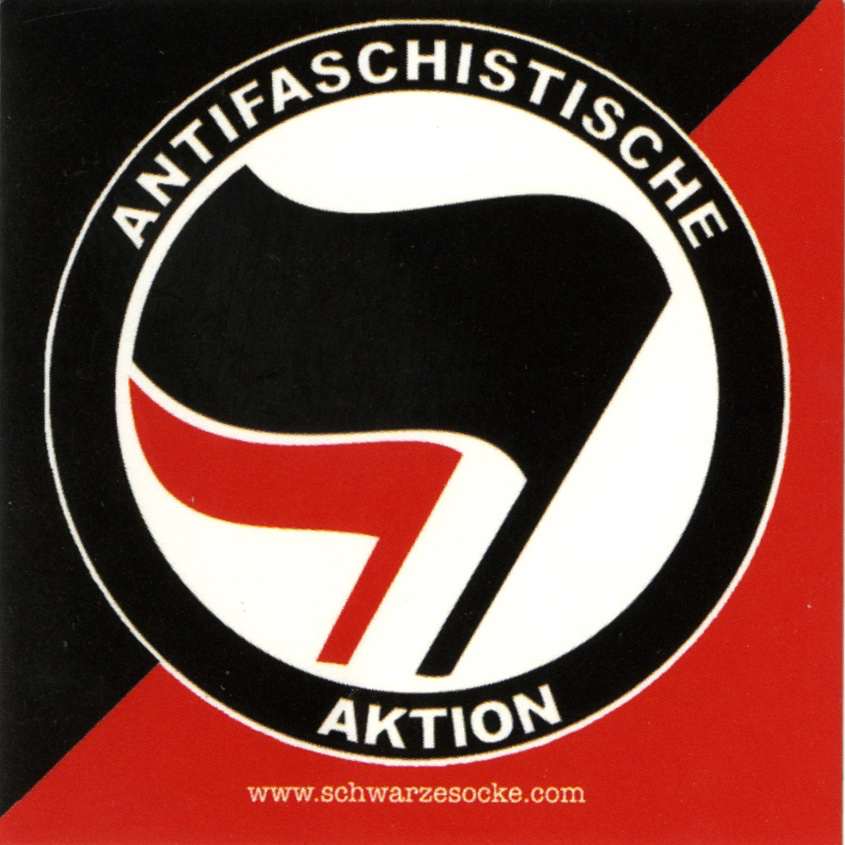
And here is what we came up with for “Heimat.”
Heimat (Description)
Heimat is a specific German term and concept that does not have an English equivalent, but it refers to “home,” “homeland,” and love and affinity toward one’s birthplace and traditions. The concept has varied over time. For some Germans, it connotes childhood, family, landscape, and friends. Others who fear extreme German nationalism and allegiance to a fatherland tend to view Heimat more negatively. For more information, see “Home Meets Heimat” by Alexandra Ludewig at http://journal.media-culture.org.au/0708/12-ludewig.php.
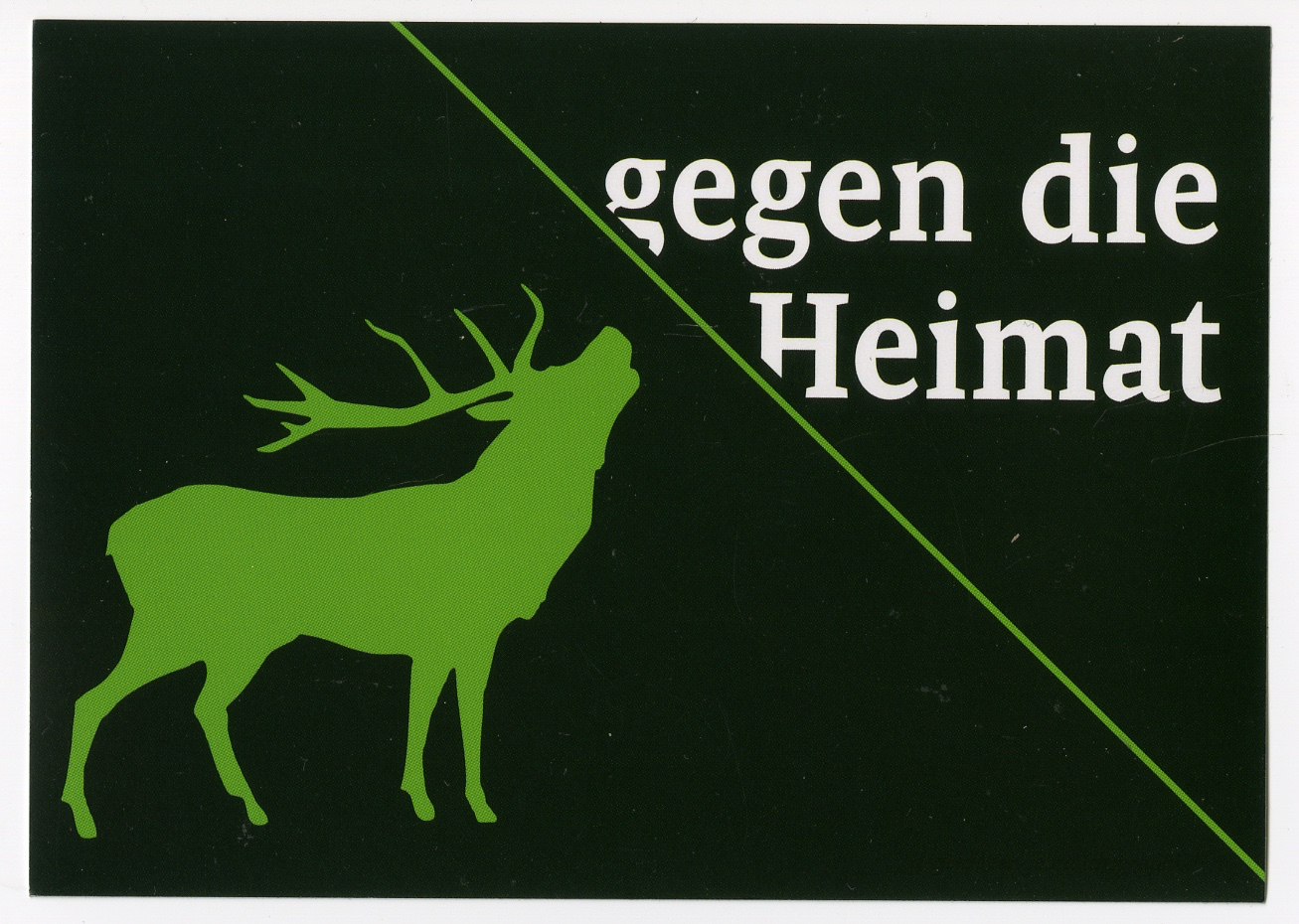
And this for “Mediaspree.”
Mediaspree (Curator’s Notes)
Mediaspree is a property investment project in Berlin, Germany, that aims to establish telecommunication and media companies along parts of the Spree River and to implement urban renewal projects in largely under- or unused spaces, transforming them to office buildings, lofts, bars, clubs, and hotels. Critics have voiced concern over issues of rapid gentrification and the privatization of public space. In 2013, a 45-meter (148-foot) section of the East Side Gallery was removed for the then-O2 World’s pier for pleasure boats and water-taxis, despite the former Berlin Wall’s protection as a historical monument. Two groups, among others, have formed in opposition. The first, Mediaspree Versenken!, is an initiative that challenges Mediaspree, in particular, and neoliberal urban development policy, in general. The second, Megaspree, whose motto is “Save Your City,” is an open, non-partisan alliance of art and cultural workers, club operators, political groups, open-space citizens, and open-space users that formed in 2009 to protest against the loss of alternative and subcultural spaces in Berlin and the destruction of such spaces by unilateral urban development policies.
